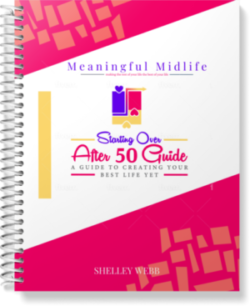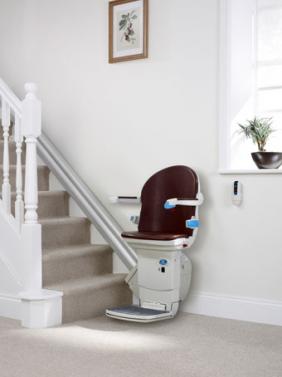Stairways can be a huge problem for seniors or anyone with limited mobility. They become difficult and dangerous to navigate. Falling down stairs is one of the leading causes of injuries to seniors.
Stairs can also limit the ability of a senior to remain in their home or in the home of a loved one if access to bedroom or bathroom requires going up or down stairs.
One way to get around this problem is by purchasing a stair lift.
There are several different types of chair lifts and different features depending upon the needs of the senior.
Stairlifts can seem expensive but when considering the alternatives, such as assisted living or new construction, they can be the least expensive option.
Things to consider before purchasing:
1. Is the stairlift for an inside or outside stairway?
There are different types of stairlifts for each situation.
2. Is the stairway straight or curved?
Stairlifts can be made for either type but the curved ones are much more expensive and require detailed measurements. If you have a stairway with a landing platform, you’ll either need 2 stairlifts (and the ability to transfer from one to the other) or a curved stairlift.
Stairlifts for straight stairways are generally mounted to the the stair treads while curved stairlifts are generally mounted to the wall.
3. Is the stairway narrow?
If the stairway is narrow (less than 31 inches) and the rider is tall or has long legs, their knees may bump the wall on the other side. In that case, it would be best to consider a standing or perching stairlift (a perching stairlift offers support under the buttocks). Some manufactures also design special stairlifts for narrow stairs.
4. What is the weight and height of the rider?
Some manufacturers offer stairlifts that will support riders who are over 300 pounds. For those riders who are tall and/or weigh over 300 pounds, a larger seat depth would also be beneficial.
5. How is the mobility of the rider?
Riders must be able to transfer in and out of the stairlift safely; otherwise, there would be no benefit in purchasing one. When using a standing model, riders must also be able to stand for the length of time it takes to reach the destination (often several minutes).
6. What is the length of the stairway?
For longer stairways, there are models available for lengths up to 45 feet and of course, that would be an additional expense.
7. Which side of the stairway will the chairlift be placed and will that leave room for a handrail on the other side?
8. What is the condition of the stair treads?
They need to be in good enough condition to be able to attach the rail for the lift.
9. Does the chairlift come with an additional battery power source?
In the event of an electrical outrage, the rider needs to be able not to be stranded.
10. Does the stairlift have safety sensors so that it will stop when an obstacle is in its path?
11. Do the seat and footpiece fold up when not in use?
12. Does the stairlift have a swivel seat?
A swivel seat is not only more convenient but is also safer.
13. What type of control(s) does the unit have?
There are generally three types: push-button, paddle and infra-red. The pushbutton is like a remote; the paddle is located on the arm of the lift and the infra-red can be operated from a device that the user and/or caregiver holds.
14. Is there a key feature?
This is where the chair cannot be operated unless the key is in place and turned to the “on” position (a great feature for those with grandchildren).
15. Maintenance
The stairlift should be serviced every 6 months or as recommended by the manufacturer. Does the stairlift come with a maintenance plan? Does it come with an insurance policy and if so, is the policy more expensive than the stairlift itself? ? (I’m expounding on this point because in looking at reviews of the various manufacturers, this seems to be a big complaint.)
Are there stairlift service providers in your area who are able to work on the model that you are considering for purchase?
16. Would you consider a refurbished model?
Some manufacturers offer this option. If so, ask for an explanation of the warranty offerings.
Stairlifts are definitely a good option for many seniors or loved ones with mobility issues. As with any major purchase, it is imperative to examine all the options and features in order to decide if a stairlift is right for you or your loved one.
Photo credit: Used with permission by ageukmobility.com
LEARN TO LOVE YOUR LIFE AGAIN
 Do you feel like you need to hit the REFRESH button on your life? Download our free guide and begin to create your best life yet!
Do you feel like you need to hit the REFRESH button on your life? Download our free guide and begin to create your best life yet!




Really glad that I came across this list of 16 things to consider before purchasing a stairlift. Now I can make sure that I am helping my grandpa get the right one for his home and what it is that we need to be looking for exactly. That way we can really ensure that we purchase the one that is right for all of his needs. Doing this will make it so much easier for him to get up and down his stairs without falling down.
Great list. These are some of the questions we get asked on a daily basis about stairlift installation. This is a great resource we can point some customers towards, if they have such queries. Thanks
Thank you.
I think you make an excellent point when you mention how you should consider whether you have a curved or straight staircase since you will need to choose your stairlift accordingly. My grandmother has trouble using her bathroom during the day since her weak knees prevent her from safely using her curved staircase without my assistance. Maybe she should consider getting a stair lift in order to remain safe.